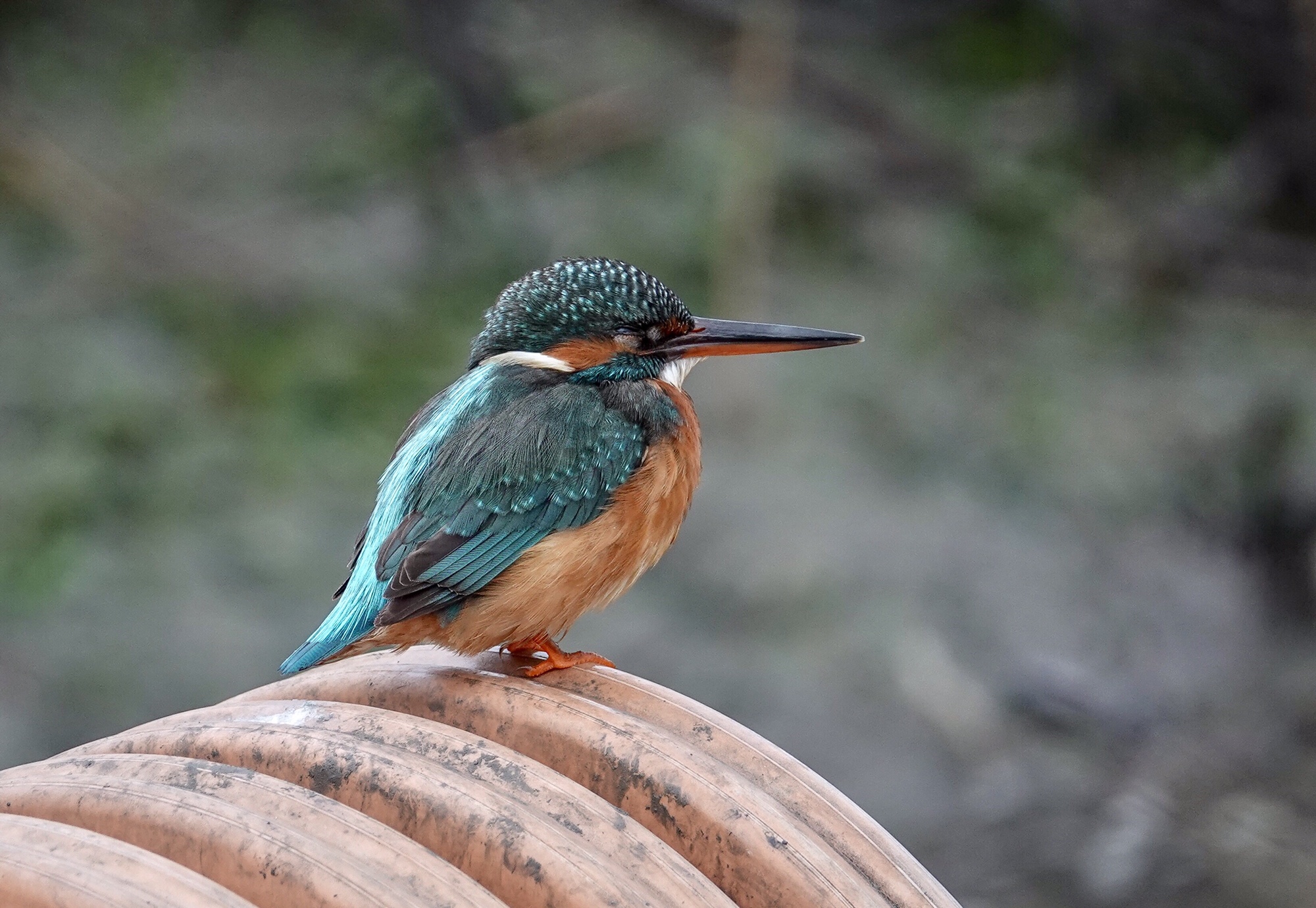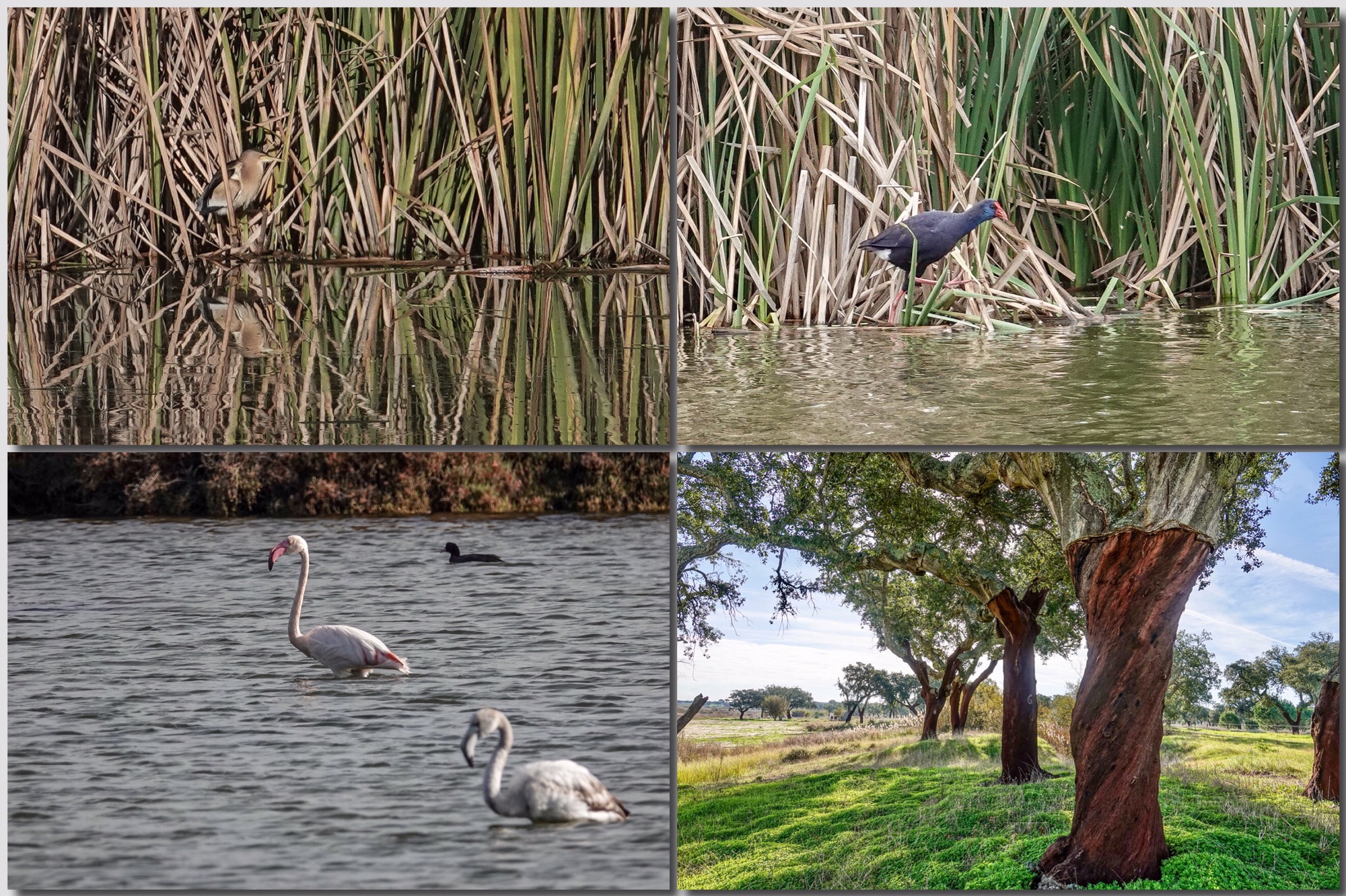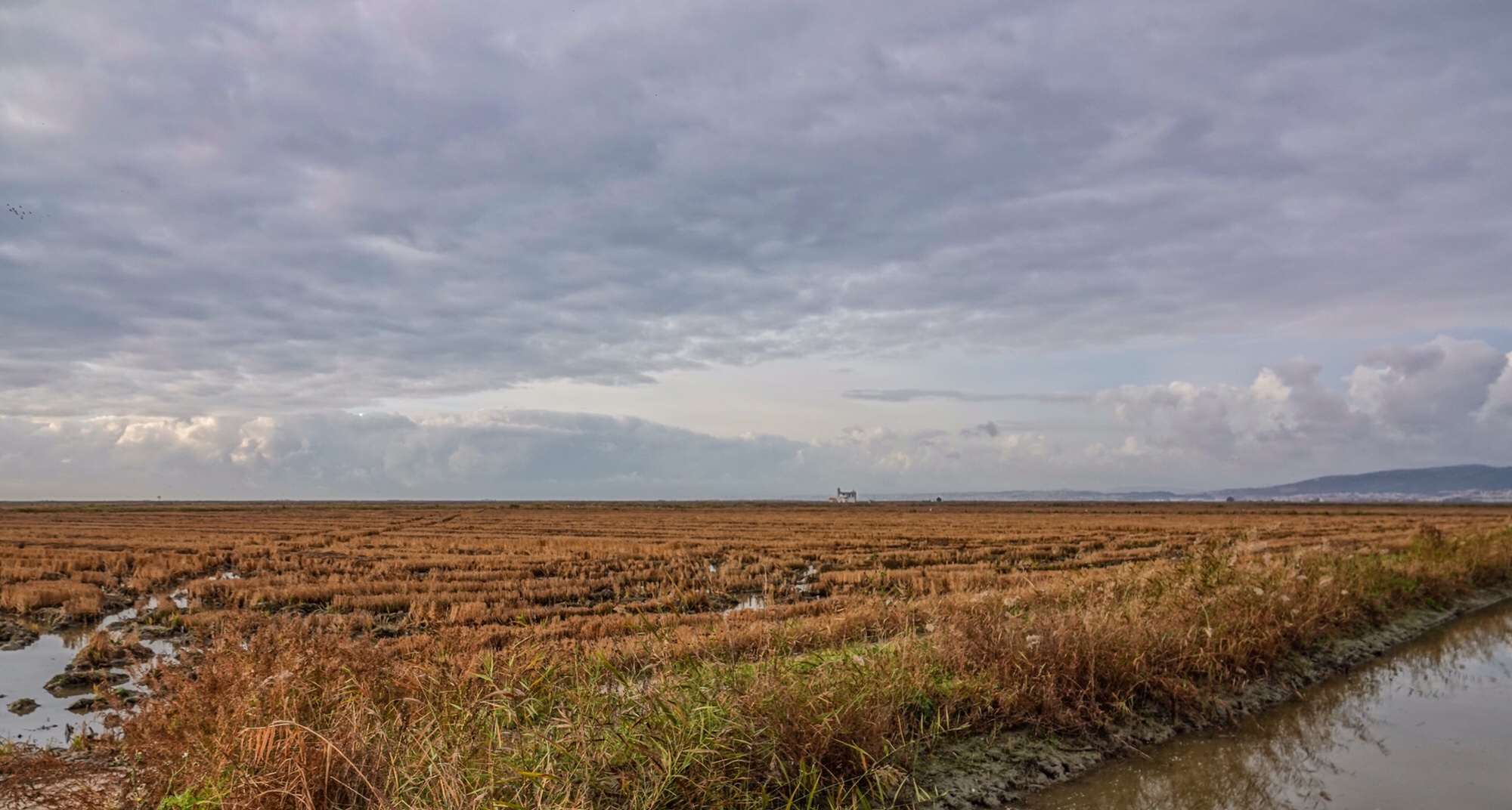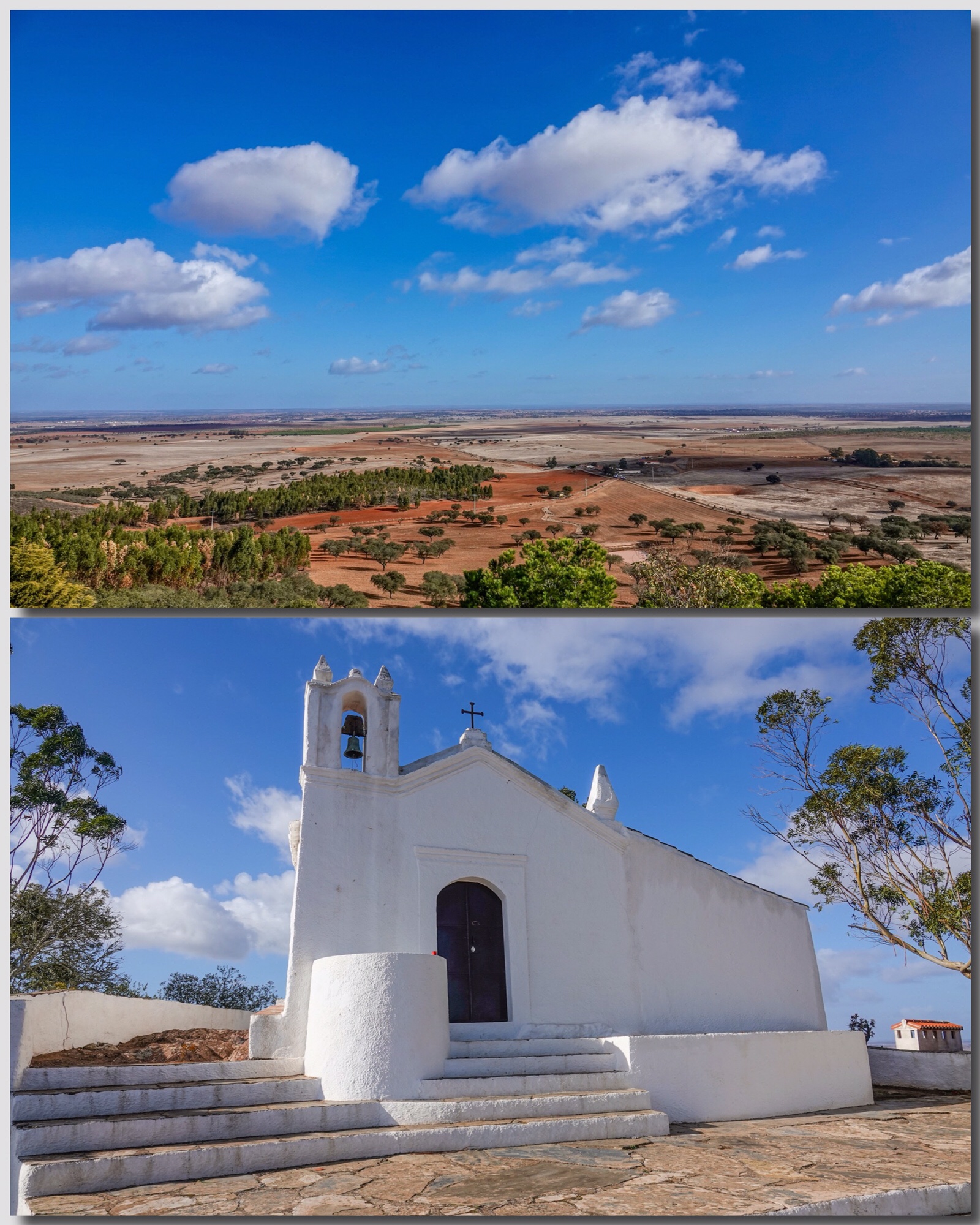
Note: I will be returning to southern Portugal in the spring of 2019 for more breeding birds and the hillsides covered with wildflowers, as well as the attractions detailed below. If you would like to join me check out the info here.
Let’s cut to chase: if you want to see the most iconic European birds, and you want to see them in a few days, without traveling long distances between birds, then there is simply nothing to equal Portugal, and southern Portugal in particular. Between the Tagus Estuary and the coastal areas north and south of Lisbon, and the steppe and canyon country of the Alentejo between Castro Verde and Mértola, you will have good scope and binocular views of all the most sought after European species. If you add a day in marshes and tidal areas of the Algarve just to south, you will pick up most of your remaining target birds. And all of this is within a day’s drive from the international airport in Lisbon. Conceivably you could find, in two spring days based in Lisbon, all the birds you would spend two weeks seeking out in other countries of Europe. Sound too good to be true?
My visit was in winter when wintering birds replace nesting and migrant populations, so I missed some highly sought after birds (European Roller, Bee-eater, Lessor Kestrel, Black Stork, etc., all easy in the spring), but my trip certainly demonstrated the potential. In five days, we saw Little and Great Bustard; Imperial, Golden, and Bonelli’s Eagle; White Stork and Flamingo; Squacco Heron, Little Bittern, and Purple Swamphen; Black-bellied Sandgrouse (1) and Black-tailed Godwit (1000s), Red and Black-winged Kites; Little Owl; 1000s of Azure-winged Magpies and Northern Lapwings; several Hoopoes; and all of the common winter passerines, from European Robin and Goldfinch and Eurasian Tree Sparrow and Corn Bunting to the ever present and highly variable Chiffchaffs. We even had a glimpse a very rare vagrant from the East, the Dusky Warbler. Again, all of this within 2 hours of Lisbon. The trip was organized by João Jara of Birds & Nature Tours Portugal, and guided by Helder Cardoso. Birds & Nature Tours Portugal is oldest and most experienced birding and nature tour company in Portugal, and certainly my recommendation. They know the birds and the country better than any other group, and work hard on every trip to show you all the birds you came to see. And besides, they are just really wonderful people to spend time with.


For ease and comfort I spent 3 nights in Lisbon (though Birds and Nature Tours groups often stay across the river nearer the Estuary). My visit started with a tour of Lisbon itself, which I highly recommend including in your itinerary. The city is full of interesting history dating back before Roman times. The monuments to the age of Discovery are worth seeing, as are both the older and more modern sections of the city. I spent an interesting evening with Miguel Gonzaga, head of tourism programs for the City of Lisbon, talking bird conservation and tourism. Lisbon is committed to working with João and other tour leaders to promote southern Portugal as a birding destination. They are aware of the challenges and of the potential. I was impressed. (I want to thank Turismo de Lisboa for helping to making my trip possible.)

The following two days, Helder took me to the Tagus Estuary across the broad Tagus River from Lisbon. The Tagus Estuary is a “reserve” focused on bird conservation, but reserve in Portugal means something different than most Americans, used to our developed National Wildlife Refuges, National and State Parks, and conservation areas will expect. The Estuary is mostly rice fields, and aggressively agricultural, and though access is limited, there are no official tour loops or trails. When you visit, you drive the dyke roads between the rice fields, or visit a few spots what give access to the mud flats at low tide. There is a Visitor Center of sorts, the EVOA Center. It is actually an Eduction and Research station (Bird Observatory), funded by the Tagus Estuary Land-owners Association and both government and private funds with an ultra modern natural looking building, man-made lagoons and traditional hides (blinds) for viewing birds, but it is still very much under development. One of the most interesting places we visited was a farm just at the edge of the estuary where the ground begins to rise, where a fresh-water pond in a Cork Oak grove is home to both Little Bittern and Purple Swamphen, and the surrounding grove is full of passerines. Birds and Nature Tours Portugal has an arrangement with the land owner for access.

Cork is one the major exports of Portugal, and you see Cork Oak groves everywhere the land is suitable, generally with pigs grazing on the acorns under oaks. All cork in Portugal is protected by law, and very carefully managed. It takes 18 years for a cork tree to reach the size where the first layer of cork can be stripped…and that cork is of no use. You have to wait 9 more years for the cork layer to grow back before you get usable cork, and then the tree can only be harvested every 9 years after that. Clearly cork is a long term investment. As Helder said, you don’t plant cork for yourself…you plant it for your children.


Because I was primarily interested in photographing birds, we spent more of our time at the north end of the Estuary in the rice fields than we did scoping the mudflats. In the rice fields smaller birds often perch relatively close on the road-side fences, and raptors perch on anything with any height (we saw our only Bonelli’s Eagle perched on a high-tension tower in the Tagus). White Storks wander the dryer fields, while flocks of Godwits, Glossy Ibis, Avocets and Stilts hunt the shallow flooded fields. And Snipe. 🙂 We found the flock of Little Bustards, and glimpsed a Great Bustard off across the fields near the EVOA center. The highlights of the Tagus Estuary for me were 1) a very close view and photographs of a European Kingfisher perched on the end of a drain pipe early one morning (seen at the top of this post), and 2) the Squacco Heron, probably the most difficult Heron to see anywhere in Europe that we finally saw on our 4th attempt in its territory, on a detour from our route home to Lisbon on the last day.
I am always looking for landscapes, and the unique nature of the both the land and sky of the Tagus Estuary, with the hills behind Lisbon, gave me several opportunities.

After two days in the Tagus Estuary, we headed inland toward the steppe country around Castro Verde where we hoped to find closer looks at Great Bustard, and locate some Imperial Eagles. Our first birding stop was a hill-top chapel that featured a spectacular 360 degree view out over the rolling hills of the region, and, on a good day, often provides views of Eagles and Kites riding the thermals. I can’t say we were there on a bad day, since, for me, the view and the interesting chapel were worth the visit, but the raptors did not cooperate. We spent the late morning and afternoon driving the roads looking for Bustards and Eagles.

We had several sightings of Bustards, far off across the winter fields, and finally found a small flock feeding over a rise from the main road between Castro Verde and Mértola. We were able to park the car and walk to the top of the ridge for a slightly closer view and some photographs…still at the far range of possibility. Magnificent birds in the scope. And I got proof that they can actually fly, as they did just that after about 10 minutes of observation.

We located two juvenile Imperial Eagles soaring over the hills north of the route from Castro Verde to Mértola, near a known active nest. They were this year’s hatchlings, still hanging out on territory. I was able to get some decent flight shots as they came right overhead. Later, near a irrigation dam feeding a huge olive grove between the hills north of Alvares, we spotted three Golden Eagles on a far ridge. Good Scope views but too far for photography. On the way into the dam, we found a Little Owl in one of it favored roosts in a pile of stones left from an old building right next to the road. Both Red (native) and Musk (not native but certainly naturalized) Deer wandered the hillsides above the dam.

We chased a rainbow all the way back to Mértola and our hotel, and stopped to photograph it above the classic white hilltop village of Alvares. The highlight of the next morning was a single field where we stopped to scope Eagles on the ridge. They were immature Imperial’s, probably the same two we had seen the day before, but while stopped we located a Great Bustard, perhaps playing lookout for a group concealed in folds in the landscape, and a lone Black-bellied Sandgrouse, much closer. That makes three of most sought after birds of the region in a single stop in a single field. And, of course, Red Kites circled and there were the ever-present (in winter in southern Portugal) Northern Lapwings.
The highlight of the next morning was a single field where we stopped to scope Eagles on the ridge. They were immature Imperial’s, probably the same two we had seen the day before, but while stopped we located a Great Bustard, perhaps playing lookout for a group concealed in folds in the landscape, and a lone Black-bellied Sandgrouse, much closer. That makes three of most sought after birds of the region in a single stop in a single field. And, of course, Red Kites circled and there were the ever-present (in winter in southern Portugal) Northern Lapwings.
Again, my birding in the Alentejo consisted mainly of driving the rural (often one lane) roads to see what we could find. Helder and João are both in the region most weeks of the year, so they know where to look and what they are likely to find in any season, but it is a different kind of birding than most Americans are used to. There are fewer trails (though João tells me that there are more than I hiked in my short time there…several of which are usually included in the longer trips). There are very few observation blinds. We rarely get out of the car unless there was something that required a scope view. In addition, there are few concentration points where the birds reliably gather in any number. There is a lot of good habitat and the birds can be spread thin. Still, in course of our morning, we had most of the common wintering species…and good looks at most of them. I was able to photograph my Hoopie and Great Spotted Woodpecker out the car window.

We were back in Mértola for lunch, which included coffee with the Vice President of the Municipality, Rosinda Pimenta, who manages tourism in the region. She is energetically enthusiastic about developing the area as a birding destination, and very aware of how birding and nature observation and photography can be part of the sustainable future she sees for Mértola. Mértola is the 2nd largest Municipality in Portugal, and its most scarcely populated. People visit for the scenery, the hunting (Hunting Capital of Portugal according to the sign), the history (the whole village is one huge museum and archeological site, with settlement dating back to before Roman times, and activity in every age since), and, hopefully, as it develops, the birding and nature observation. They realize their limits…it is a small village with a small number of hotel beds…and they lack the infrastructure (trails, blinds, public access to birdy and wildlife observation sites…but they see the potential. They are actively introducing the local population, merchants, and land owners to the idea that birders and photographers can make a valuable contribution to the economy. Birding is not yet well known as leisure activity in Portugal as a whole, and practically unknown in Mértola. João encourages his birders to wear their binos into the hotel and restaurants just so locals can get used to idea of birders in town. One point the VP made was that birders and nature lovers can feel good about visiting Mértola because they are contributing to the survival of the Municipality at a time when it is becoming more difficult to find employment and a viable lifestyle in the region. (And again, I want to thank the Municipality of Mértola for sponsoring part of my trip to Southern Portugal.)
From every standpoint, Mértola has a lot to offer. Because of my general photographic interest, we spent the early afternoon touring the village, hiking up to the 11th century castle on the top of hill, and the equally as ancient church (originally a mosque) within its walls, viewing the excavations in the Moorish village that once hugged the castle walls and visiting the reconstructed Moorish home on the site, and photographing the ancient streets and buildings. We were staying at the Hotel Museu, or Museum Hotel, which is actually constructed around and above a excavated moorish dwelling from the 12th century.

On the way back to the hotel I encountered flocks of Azure-winged Magpies and Linnets, and later in the afternoon we drove out across the river and along the top of the river canyon to a gap in the hills where Bonelli’s Eagles nest. The eagles did not show, but the drive includes the classic sunset shot of Mértola, from Castle to river, glowing white in the low light.
 The landscape around Mértola is also interesting from a photographic point of view. I got lots of satisfying shots. In spring, Helder assured me, the hillsides are carpeted with wildflowers, which makes the landscape even more interesting.
The landscape around Mértola is also interesting from a photographic point of view. I got lots of satisfying shots. In spring, Helder assured me, the hillsides are carpeted with wildflowers, which makes the landscape even more interesting.

The following morning was my last in the field, and we drove north to Wolf’s Leap (Pulo do Lobo), a famous waterfall and canyon on the Guadiana River where it narrows. The story is, a wolf fleeing hunters leapt the river above the falls. It is a very scenic area, and, in spring, an excellent birding location. Almost last, but not least, on our way back to Lisbon we visited the Mourisca Tide Mill in the Setubal wetlands, another reserve right on the coast south of the city. We only had time for a brief stop, but the potential here is great. For one thing, the constant human traffic to the museum and coffee shop in the Tide Mill means the the birds are not nearly as skittish as elsewhere in Portugal, allowing for some close observation and photography. Finally, we made a detour off our main route to the city to take one more crack at the Squacco Heron. Helder insisted that it was generally much better behaved (and visible) than in our previous visits…where the most we saw of it was the bird flying away across the marsh. 4th time is charm. It was not on its perch near a small one-lane bridge, but we found it in dead water plants near another bridge a quarter mile on. Considering how difficult this bird is to see anywhere in Europe, I was happy with my views.

Helder dropped me off at the hotel in Lisbon and I caught my flight home the next morning.
To summarize…well I can’t say it any better than I did in the introduction. “Conceivably you could find, in two spring days based in Lisbon, all the birds you would spend two weeks seeking out in other countries of Europe.” And that is not an exaggeration in any way. Bird photography is a bit more challenging, as it would be anywhere in Europe, but if close views can be found, João and Helder will find them for you. I hope to get a group together for the spring of 2019 to see and photography the birds and landscape of southern Portugal with Birds & Nature Tours Portugal. We would work the area around Lisbon and definitely visit the Alentejo and Mértola, with a possible extension to the Algarve (there are a lot of pelagic species and shorebirds that can be seen closer to the coasts): an easy, relaxed tour of 10-12 days which would promise just about all of the classic European species and some wonderful landscape and village photography. (João tells me that by the spring of 2019 he hopes to have several more blinds in place for hard to photograph birds.) If any of my readers are interested, please contact me at lightshedder@gmail.com for more information. Or contact João Jara at Birds & Nature Tours Portugal at joao.jara@birds.pt for one of his regularly scheduled tours.
Or visit Birds & Nature Tours Portugal on the web.
Great article and photos of the birds and sceneries Steve! How much is the cost of the tour in the spring 2019?
Thanks,
Lynn
We are still working on the trip. I will get back to you on that. 🙂
I did a Southern Portugal birding trip from April 23 to May 2, 2015 with Birds and Nature Tours – excellent tour, birds, food, accomodations were all well done. Great guide. I travelled as solo traveler – felt safe, comfortable at ease the entire time. I hired a tour guide in Lisbon for a day tour – wonderful city to explore. As I recall the full day tour was reasonable in cost. Also nice way to recover from the long flight before birding.
I really like European birding – Hungary and Iceland are also great European birding destinations.
My photos:
https://evsphotos.smugmug.com/Birding-Trips/Portugal-Birding-42015